Review: Catan
Score:
82%
Buy Link | Download / Information Link
 There’s long been mention of the N-Gage needing a really good puzzle game. Something that could be pick up-put down fun, but also would work for a massive gaming session. While it’s not a strict example of a puzzle game, I think Catan could nicely fill that role, a mysterious word that doesn’t really say much. A bit like Tetris was twenty years ago. Meanwhile, over in Germany, there is a legion of fans behind the table top game “Settlers of Catan” that are getting all hot under the collar, because Nokia are gracing the N-Gage with what they regard as the best board game in the world.
There’s long been mention of the N-Gage needing a really good puzzle game. Something that could be pick up-put down fun, but also would work for a massive gaming session. While it’s not a strict example of a puzzle game, I think Catan could nicely fill that role, a mysterious word that doesn’t really say much. A bit like Tetris was twenty years ago. Meanwhile, over in Germany, there is a legion of fans behind the table top game “Settlers of Catan” that are getting all hot under the collar, because Nokia are gracing the N-Gage with what they regard as the best board game in the world.
Catan is a mobile version of a board game that’s prized both for its well balanced game play and the way that the fortunes of the players can rapidly change over a single turn if they make any strategic masterstrokes (or blunders). Coupled with a small playing field (19 hexagons) and only an inventory of resources to show, it’s an ideal subject for a mobile game conversion.
So what exactly is Catan? Well, it’s a four-player game that starts on an uninhabited island. Every player starts by placing two settlements onto the island, and building a road from each of those. Where you build is vital, as each hexagon of land can provide a different resource (lumber, bricks, wool, grain or ore) and you’ll need different combinations of these to build more settlements and roads. You can also build on the settlements to create cities (which doubles the resources you can build) or build “development cards” which give you bonuses for creating or acquiring more resources, roads and armies.
This brings up probably the biggest problem with the N-Gage version of Catan, the learning curve. It’s more like a sandy beach, followed by a cliff face, before reaching some golden sunny meadow. The majority of Catan players are not going to come from board game users, so they’re going to be going through the manual, trying to work out all the concepts, and that’s no easy thing. Nokia have published a flash based guide to Catan and a few strategy pointers from the developers, but neither of them are truly up to the task of educating new players. For that I would recommend this flash guide to the board game, which just happens to be from Klaus Teuber, the inventor of the Settlers of Catan.
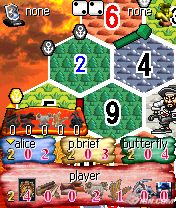
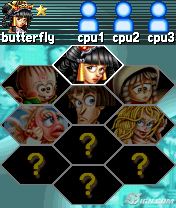
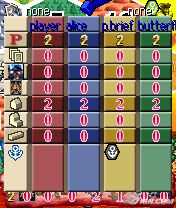
I’d encourage everyone to stick with it though, because once you know the basics, Catan displays a huge amount of depth in terms of strategy that you can use. It’s obviously a well-balanced game, and the ability to switch strategies if one isn’t working is evident throughout. The computer AI players have all got different skill levels, and they all employ their own favourite strategies. When I first started playing, the anime-style avatars for each AI, along with their ‘chatty dialogs’ in the game, seemed to be a bad decision. But as you continue to play you realise these dialogs are as important as listening to your friends moaning about not getting enough wool when playing on the table-top game. Pay attention to them.
One of the things I like about Catan is that, apart from one notable exception, you don’t fight your opponents. You can build roads and settlements to restrict their options and resource-making opportunities, but once someone builds something, it’s not going to move or be taken away from them. There’s no invading the villages here. The only partial exception to this is the robber. Every turn you roll two dice to decide what resources will be manufactured, but if you roll a 7, you get to move the robber to block a hex, and steal one resource (at random) from an opponent.
And that, as they say, is how it works. You score points by building villages, upgrading them, and building the longest roads and largest armies. The first player to ten wins.
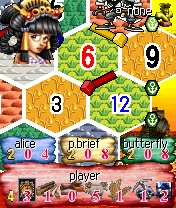
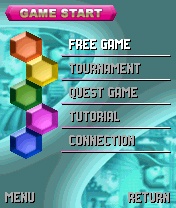
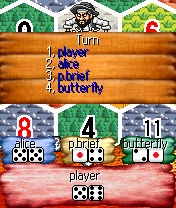
The look of the games is a mix of colourful map hexagons and the aforementioned anime characters, and it’s all controlled through a simple icon system that you navigate with the d-pad and the two primary action keys (‘5’ and ‘7’). It doesn’t get in the way of the gameplay (once you work out what all the icons are for).
So there you have it. A rather nice slice of strategy, that looks wonderful, has a good interface and offers a challenge to a wide range of skills. The learning curve might be a bit steep getting to the point where you can play it well enough, but it is worth it. And it’s also one of the first official N-Gage games to come under the budget category (it’s £15 in the UK, compared to £25 for a title such as System Rush). It’s not for everyone, but it’s certainly not a title that’s just making up the numbers.
See also these links from Wikipedia: strategy and rules.
Reviewed by Ewan Spence at
